10 trees to espalier – the best ornamentally-trained trees
Discover the best trees to espalier – and bring classic shape and interest to your yard
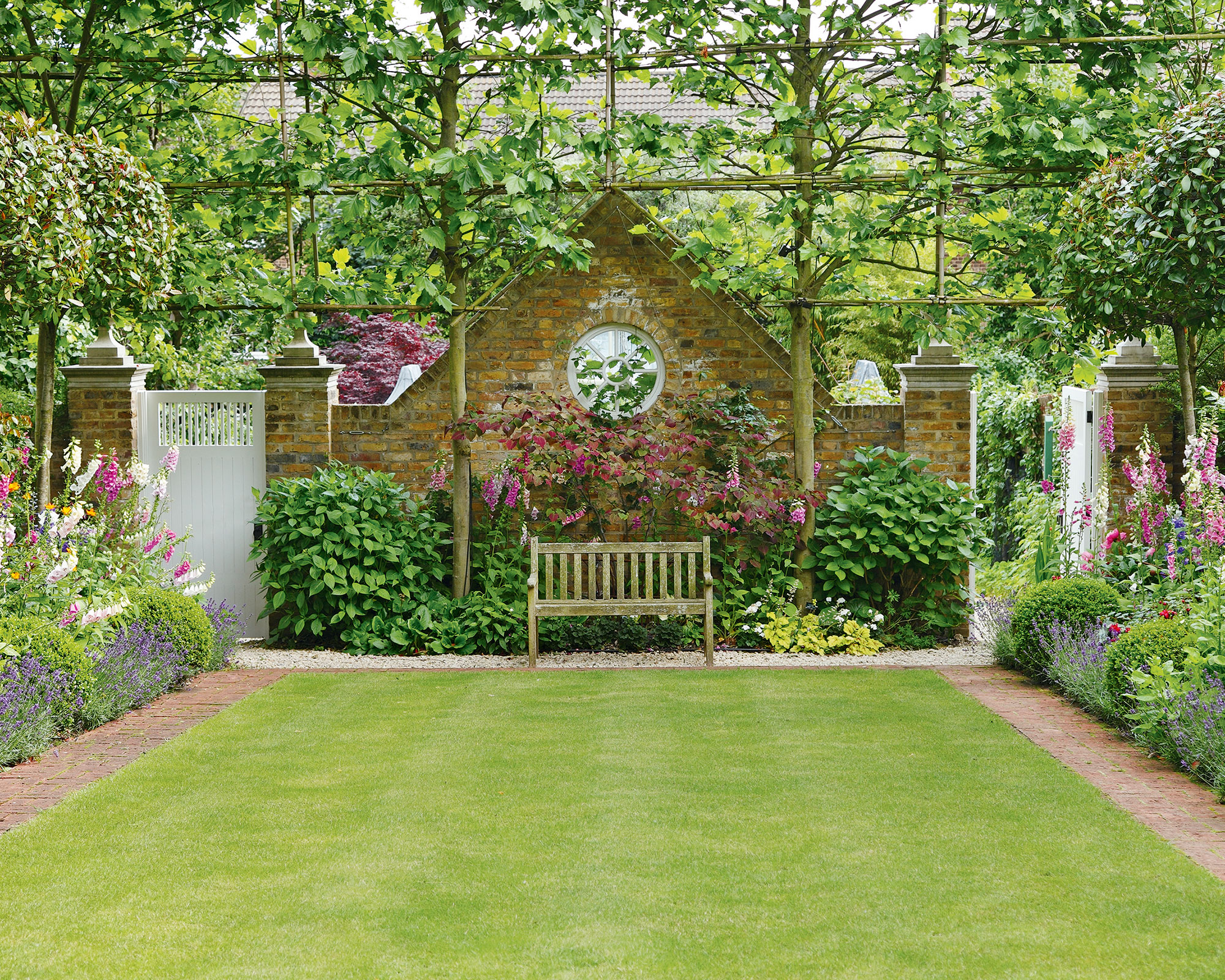

Learning which are the best trees to espalier can make a huge difference to your outside space. Delightfully decorative to look at, especially when covered in blossom and fresh leaves, creating these precisely trained trees is easier than you think.
A horticultural technique traditionally practiced with the best fruit trees, the aim is to encourage plants with a straight ‘leader’ trunk and horizontal branches or tiers at evenly spaced intervals. Originally devised so ripening fruit could benefit from the warmth retained by a brick or stone wall, these exquisite features were stalwarts of many 17th century kitchen garden ideas and French Potagers.
Although the highly ornamental results have evolved over the years to include the graceful palmette where the arms are trained at an oblique angle; the interlacing Belgian pattern and formal ‘U’ shaped cordons, the classic arrangement with its distinctive horizontal arms remains the most popular. Today this growing technique has been used to great effect with a wide range of non-fruiting varieties. Ideal for ‘greening-up’ garden walls and garden fence it’s also perfect for small gardens and forming leafy dividers.
Tree to espalier – 10 trees that will make an attractive design feature
‘Espaliers must be pruned more routinely than pleached trees, so they don't make a full 'green screen', but they do have the advantage of bearing lovely flowers and fruit’, say the experts at Hedges Direct.
1. Apple
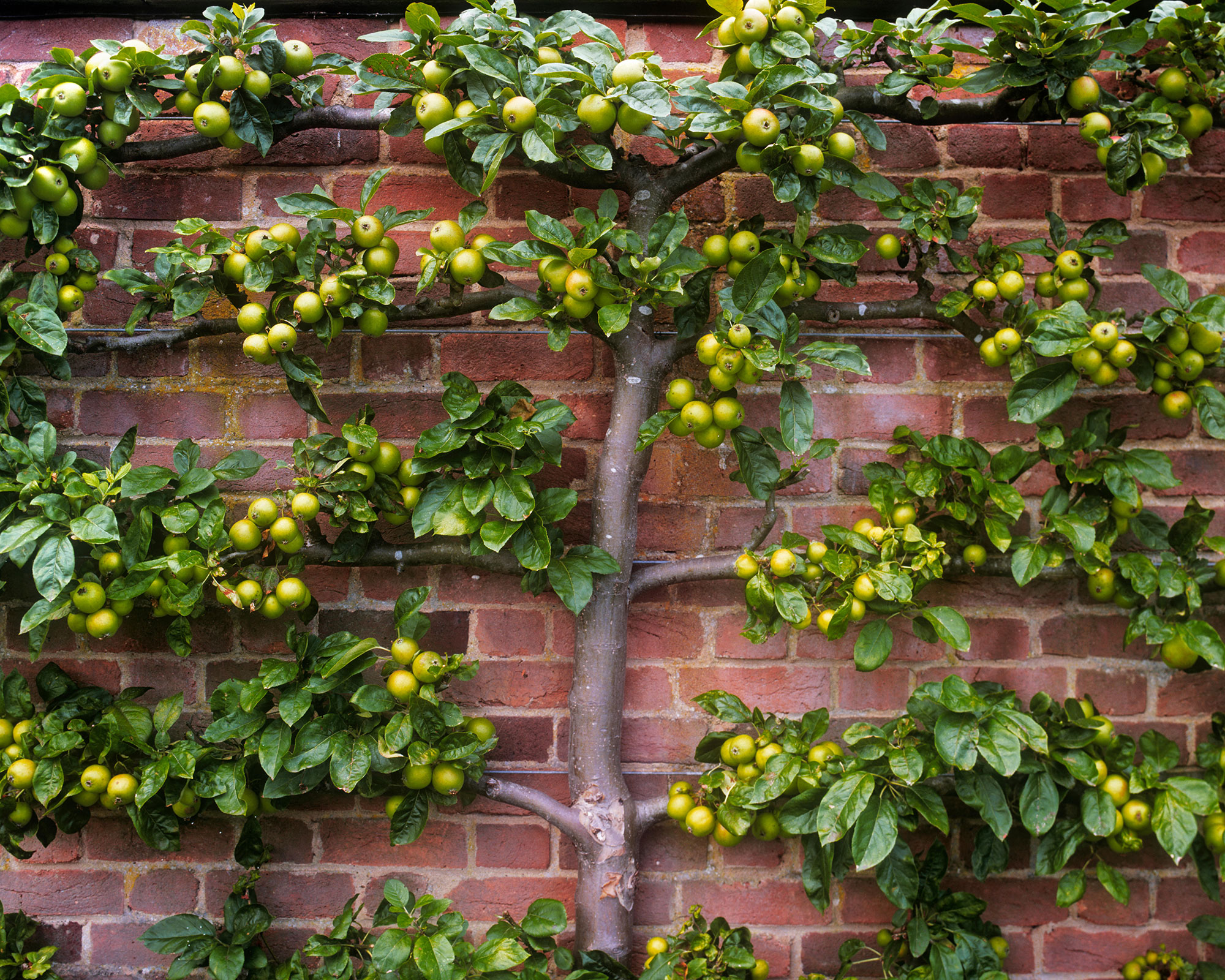
Learning how to plant apple trees to espalier is the most popular option. ‘Apple and pears are most suited to the Espalier form and if you only have room for the one tree then look out for a self-fertile variety although you may get cross pollination from a neighboring garden,’ says Jon Munday, Nursery manager at Blackmoor.
‘Apple Red Falstaff and Pear Conference are both self-fertile varieties and would be our choice in any garden. Both varieties have been awarded the RHS Award of Garden Merit. With gardens becoming smaller planting an espaliered fruit tree against a wall or fence is the perfect solution. It makes the tree easier to prune and the fruit easier to pick.’
2. Pear
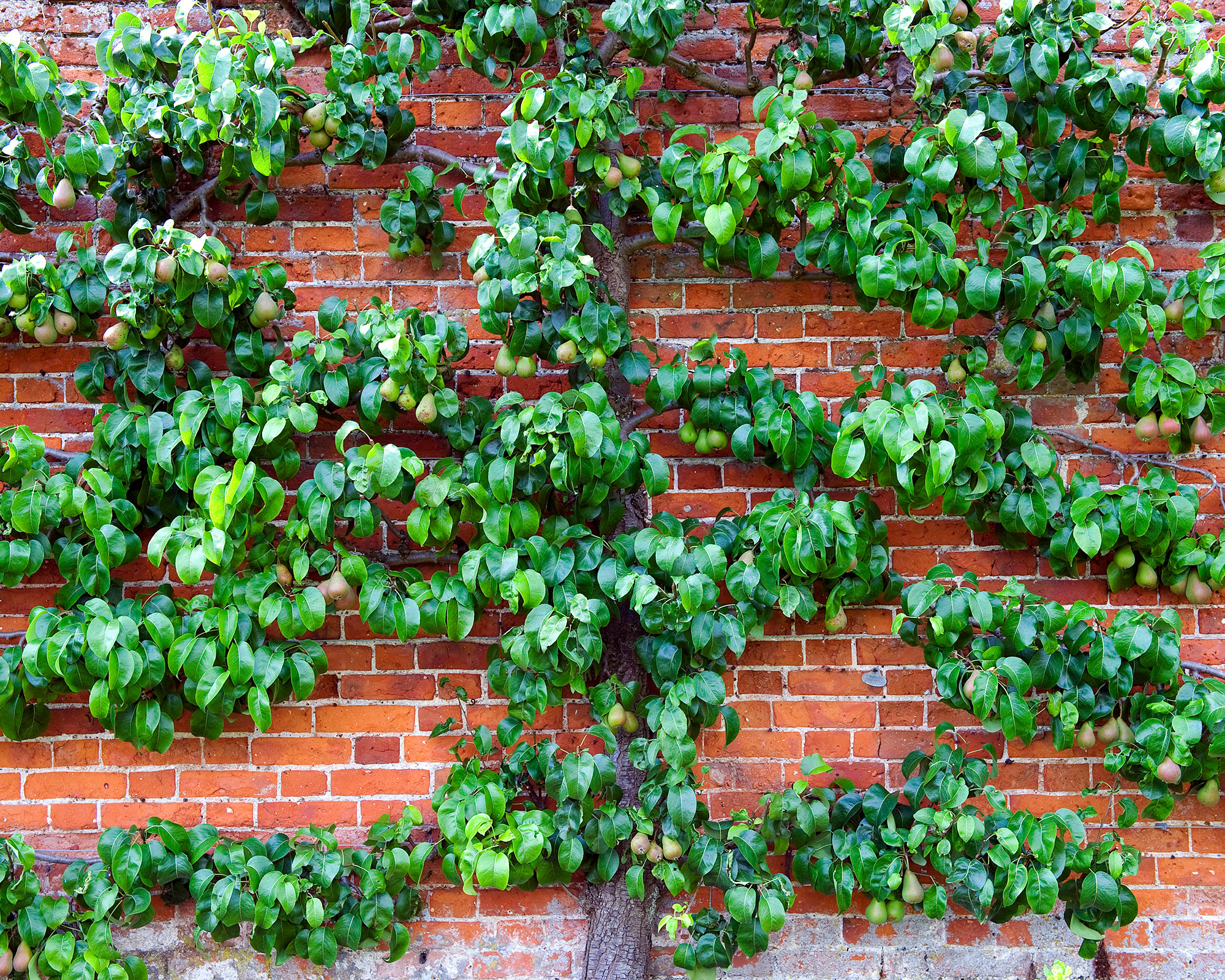
Pears with their short fruiting spurs, rather than tip shoots, are ideal for espaliers. Not only does this training technique encourage good air circulation and bud formation but gives fruit space to ripen too. Specific fruit varieties are grafted onto rooting plants selected for their individual growth characteristics.
The team at Chris Bowers & Sons, one of the UK’s leading Fruit tree specialists say, ‘Quince C is the most commonly grown rootstock for Pears and makes an easily managed, productive tree that grows well over widely varying soils. The best stock for cordon, column, fan/espalier or bush growing. 200-260cm’s on average height and spread, less if grown in a large container.’ Varieties Concorde, Invincible and Conference Pear are reliable and flavorsome. Learn how to prune pear trees to maximize fruit production, too.
3. Pyracantha
Also know as Firethorn, this hardy evergreen is instantly recognized by its dark glossy leaves and mass of tiny orange berries. Loved by birds and wildlife for both the tasty fruit and sharp, protective thorns, it makes a stunning espalier grown either against a wall or as a freestanding shrub. Sun loving and unfussy when it comes to soil, providing it is well drained, this handsome shrub will grow up to 9ft (3m) high and wide and is happy in HDSA zones 6-9.
In early summer the stems are covered with fragrant white flowers adored by pollinators for their high quantities of nectar. To preserve the maximum crop of berries, prune directly after flowering, and snip off any unwanted side shoots. Tie new growth into the supporting framework during November (as the plant falls dormant) using soft twine.
4. Camellia
Although any camellia can be grown as an espalier, it’s the fast-growing tree and sun loving Camellia sasanqua varieties that are the most successful. Fall flowering, choose from single open blooms through to blowsy, peony-style flowers in shades of deep pink to white. Fully hardy down to temperatures of 14F (-10C), these elegant shrubs can reach up to 10ft (3m) tall and 5ft (1.5) wide. Ideal for a striking and fragrant display when backyards are notably short on color, they look spectacular when neatly trained.
Many camellias dislike being grown directly up against a wall, largely due to the retained heat. Instead support a framework of tensioned wires or timber battens on a pair of sturdy posts, sunk into the ground 2-3 feet (60-90cm) parallel to the wall. Tie the plant at 8inch (20cm) intervals using soft natural or plastic twine.
5. Crab apple
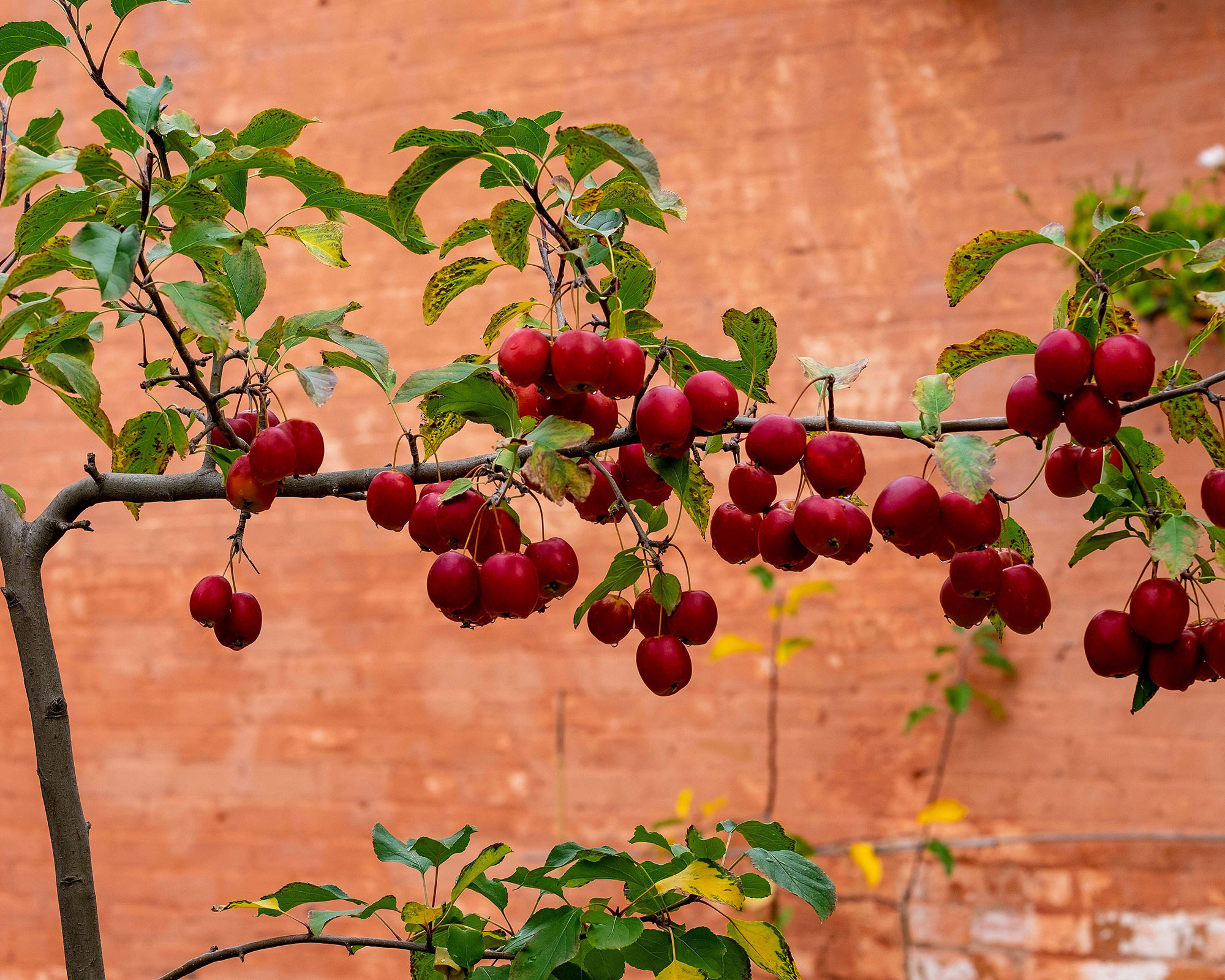
Flowering crab apples are compact, ornamental trees ideal for training as espalier. With showy blooms in spring and vibrant fruits in fall, they add brilliant seasonal interest to even the smallest of spaces and are popular with wildlife and birds too. The crop of small, round fruits often remains on the branches long into the Winter adding splashes of gold, orange, red and russet brown.
One advantage of crab apples is that they are all self-fertile, meaning that you only need a single plant for guaranteed fruit. John Downie, Indian Magic and Red Sentinel are all reliable growers and largely disease resistant. Dolgo also known as Pink Glow originates from Russia so is exceptionally hardy down to HDSA zone 3.
These fruiting trees tend to be easy to train into complex espaliers. If you fancy trying a more ornate format, then these are the plants to use. Candlelabras, ‘Y’ shape fans and Palmettes all work well but do require some patience.
6. Hornbeam
‘Due to Hornbeam’s ability to regenerate after pruning, this popular deciduous tree is ideal for forming espalier or pleached trees,’ say the team at Practicality Brown. ‘It has a very compact and closed crown with a strictly vertical trunk with smooth dark-grey bark.’ Hardy, tolerant of most positions and soil types, this handsome tree creates majestic, leafy barriers with vibrant foliage in spring and fall.
7. Quince
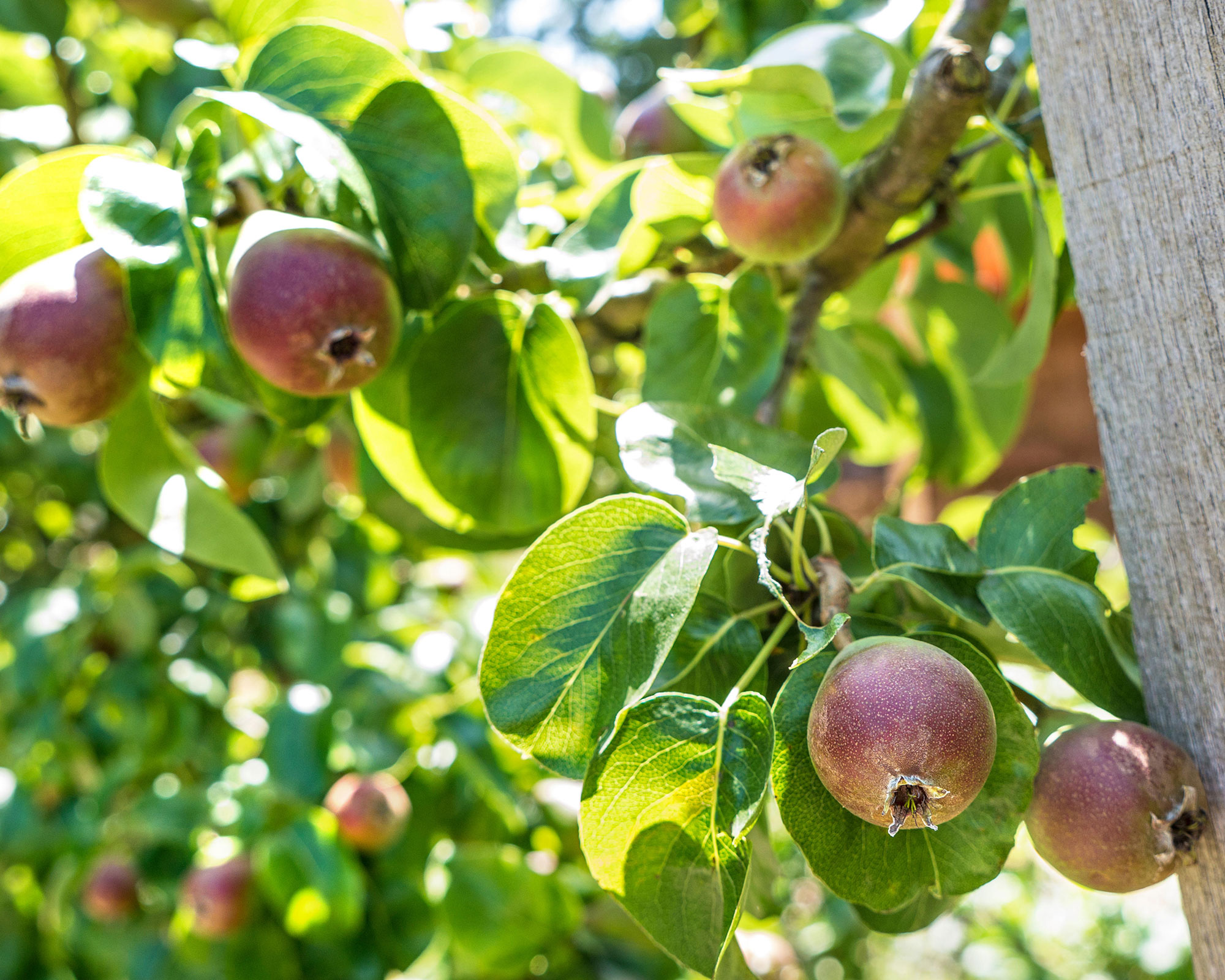
Looking for a dramatic and unusual fruit to train as an espalier? Then try Quince. Deciduous with large, single, pale pink flowers in May-June followed by curiously hairy and fragrant golden fruit in late October and November, these exceptionally long-lived trees can be successfully trained into elaborate shapes. They do require well-aerated and free-draining soil and a warm, sheltered and sunny spot is a must for the best flavored fruit. Although tip bearing specimens they can be grown against a wall as fan-shaped espaliers. Their weighty fruit does require a sturdy wooden or metal framework but looks spectacular.
8. Medlar
Although tip bearing, Medlars can be trained into a fan-shape espalier, as the impressive example at The Lost Gardens of Heligan, Cornwall shows. It’s a slightly more relaxed arrangement than a formally espaliered apple or pear, but it has a distinct, individual character all of its own. An ancient fruit popular with Greeks and Romans, they were also loved by the Victorians and were a common feature of many kitchen gardens. Unusually the fruit is best harvested in October or November, after the first frost and left to ‘blet’ or sit and ferment for two or three weeks before using. This process helps to break down the tough and bitter outer skin, sweetening the flesh inside.
9. Bloodgood Japanese maple
‘Some trees are so beautiful they don’t even need flowers to be worth growing this way, so imagine the lovely Japanese maple trees trained across a wall in a beautiful Japanese garden,’ suggest the experts at The Tree Center.
It’s a rather a different approach to the usual apple and pear trees, but with some careful pruning and tying the colorful results can be spectacular, particularly against a black painted wall or fence. With its deeply-cut, intense red-purple foliage, this large deciduous shrub makes a dramatic feature right from when the fresh shoots appear in early spring through the last leaf fall in October-November. While it is happy in moist but well-draining, slightly acidic soil it does prefer a sheltered spot in partial shade.
10. Photinia red robin
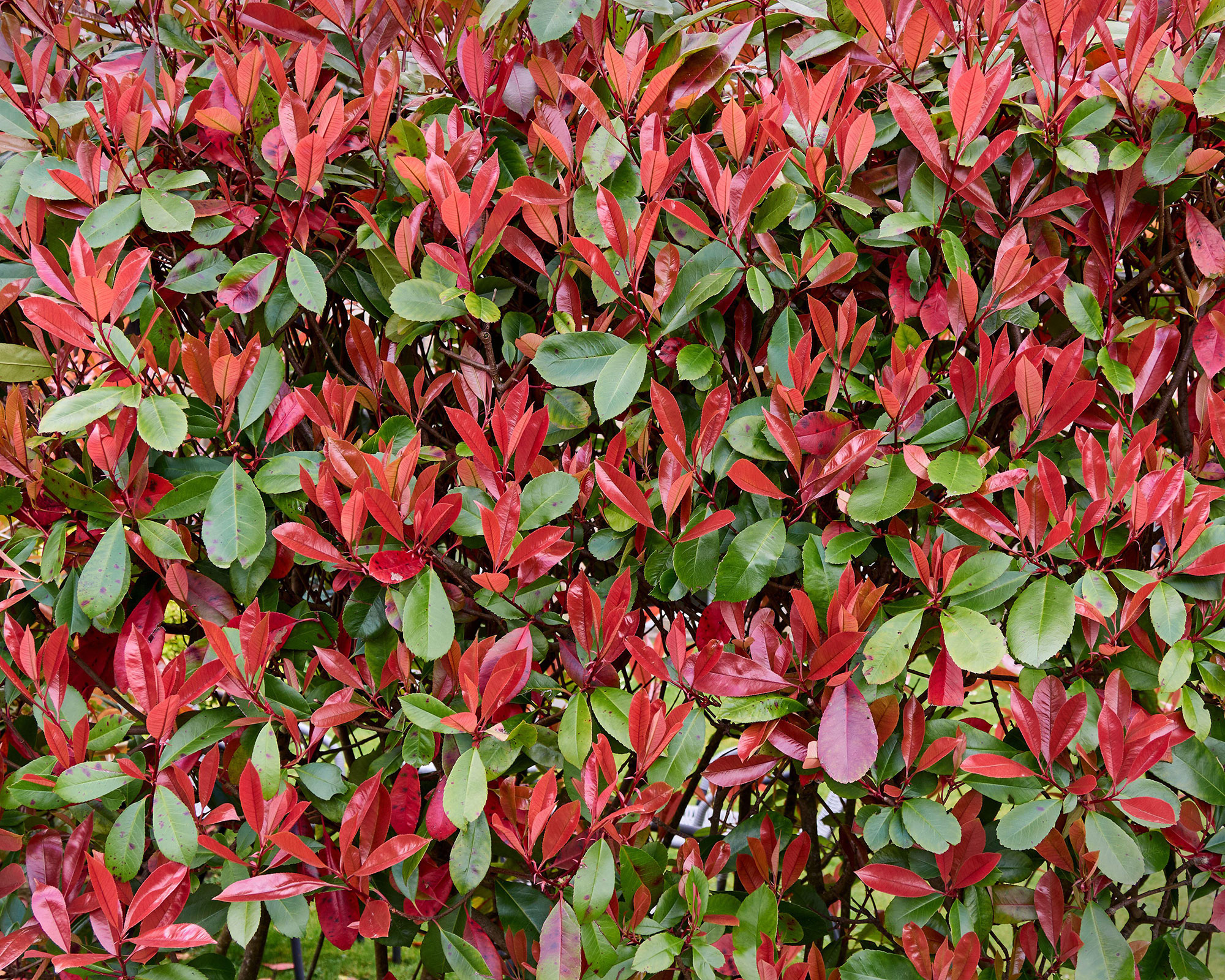
‘Pleached and espaliered trees provide a wonderful architectural look within a garden, but they also do so much more,’ says Mike Glover, Managing Director of Barcham Trees.
‘Small gardens that require privacy from neighboring properties can use pleached trees as a frame of foliage without taking up much precious lateral space to attractively create a green wall above fence height. Popular trees include the evergreen Photinia Red Robin. However, these trees do need maintaining to tame the growth to your desired shape. For deciduous trees, this is best done when the trees are dormant in the winter and for evergreen trees the time for pruning is in the spring, just before the new flush of fresh growth emerges.’
Where’s best to grow an espaliered tree?
Against or just in front of a wall is the ideal place to grow an espaliered fruit or ornamental tree. Not only will the plant benefit from the retained warmth and shelter, resulting in masses of blooms and fruits but the intricate shape of the carefully curated branches will make a stunning and attractive feature. Espaliered trees can also be grown as a freestanding screen. Great for adding garden screening and privacy, filtering strong sunlight or just as a softer alternative to solid fencing, they do require patience and some degree of care, but the results are well worth the effort.
Top tips for a successful espalier
- Always use sharp and clean secateurs for pruning side shoots. This will prevent disease from infecting the plant and encourage to water to quickly drain off.
- Never use wire to tie shoots to a framework as it will easily cut into the stem and cause damage. Soft natural twine and plastic plant ties are a better option.
- Look for a nursery grown plant that already has a suitable growing pattern for an espalier i.e. a straight central stem and well-spaced side shoots or branches.
- Create a sturdy and secure framework to tie the branches too. Heavy gauge wire firmly fixed to the wall with spacers and tensioners will help shape the plant.
Sign up to the Homes & Gardens newsletter
Design expertise in your inbox – from inspiring decorating ideas and beautiful celebrity homes to practical gardening advice and shopping round-ups.

Journalist Jill Morgan has spent over 20 years writing and editing gardening, interior and property features. Titles she has worked on include The English Home, House Beautiful, Ideal Home, Houzz and Modern Gardens and she writes regularly for H&G as a Contributing Editor. Whilst she is a dab hand at renovation projects and DIY, she is happiest when out digging in the garden or planning a new border.
-
 Miley Cyrus breaks a cardinal decorating rule with her 'floating table' – her unexpected layout transforms a dead space into a stylish breakfast area
Miley Cyrus breaks a cardinal decorating rule with her 'floating table' – her unexpected layout transforms a dead space into a stylish breakfast areaThe singer tosses aside the maxim that furniture shouldn't be floating in the middle of the room with an innovative kitchen layout
By Sophie Edwards Published
-
 It’s a concept straight out of a fashionista's playbook, but I used the Sandwich Method to organize my kitchen shelves – it’s never looked sleeker
It’s a concept straight out of a fashionista's playbook, but I used the Sandwich Method to organize my kitchen shelves – it’s never looked sleekerIt transformed messy to mesmerizing in a matter of seconds
By Punteha van Terheyden Published